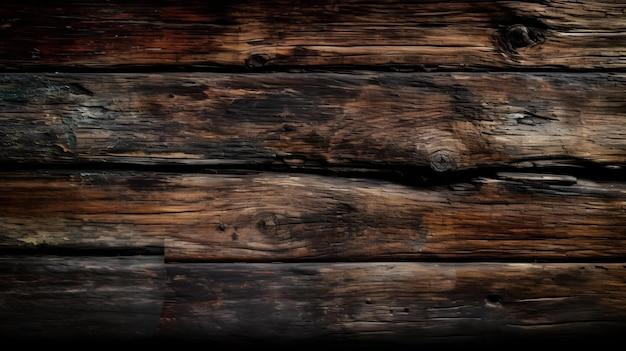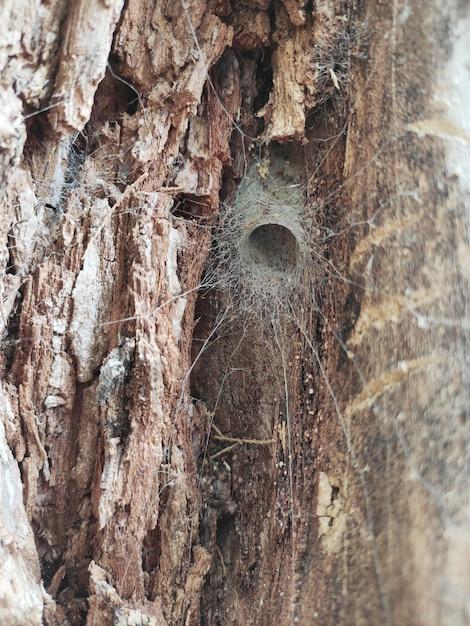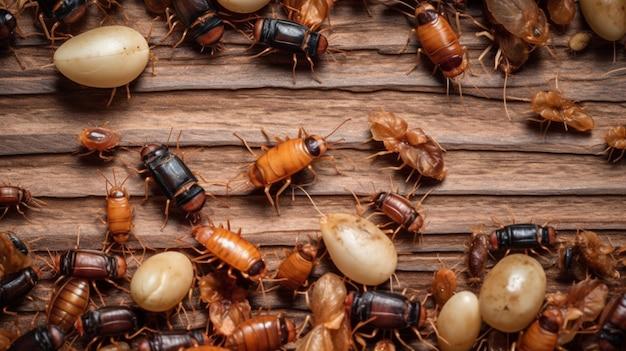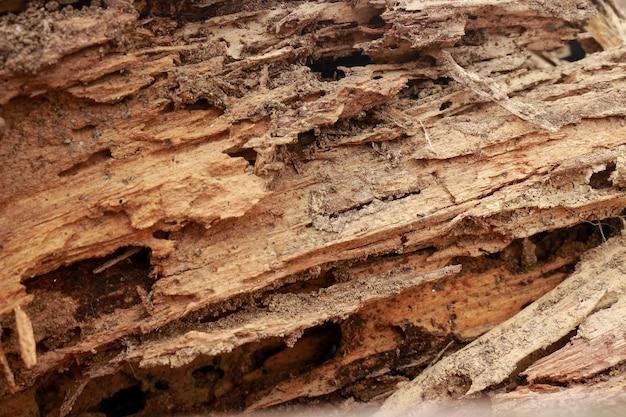Termites and dry rot are two of the most common household issues that many homeowners face. While both can cause significant damages, they are different and require different treatments. As a homeowner, it’s essential to understand the difference between them and know how to identify the signs of their presence.
Dry rot and termites are often mistaken for each other, which can result in improper treatment and costly repairs. It’s crucial to differentiate between the two to determine the best course of action. In this blog post, we’ll answer some of the most frequently asked questions about termite and dry rot inspections.
Are you concerned about dry rot or termites in your home? You’re not alone – many homeowners experience these pests at some point. In this guide, we’ll cover the differences between dry rot and termites, how to identify them, and what you can do to prevent and treat them. Whether you’re dealing with an existing problem or looking for ways to protect your home, we’ve got you covered. So, let’s dive in and learn everything you need to know about termite and dry rot inspections!
Termite and Dry Rot Inspection: Why Is It Important
If you live near wooded areas or have a wooden structure in your home, you may have heard of termites and dry rot affecting wooden structures. Termites are pesky insects that can cause extensive damage to the wooden structure of your house, while dry rot is a type of fungal infection that weakens the wooden structure by consuming its cellulose fibers. These two issues can lead to costly repairs and even pose a safety hazard to your house.
What is a Termite Inspection
A termite inspection is an essential part of the home inspection process. A termite inspector will examine your home for any signs of termite activity or damage. They will look for mud tubes, wood damage, and termite pellets. The inspector might use a probe to check for weakened wood or other evidence of termite activity.
A termite inspection is an excellent preventive measure that can save you costly repairs in the long run. If you are buying a house, it’s crucial to perform a termite inspection to avoid purchasing a home with hidden termite damage.
What is a Dry Rot Inspection
A dry rot inspection is an examination of the wooden structure of your home to check for the presence of dry rot. The inspector will look for signs of dry rot, including discoloration, weakened wood, and fungal growth.
Dry rot is a serious issue that can weaken the wooden structure of your house, leading to expensive repairs. If you suspect dry rot in any part of your home, it’s important to schedule an inspection immediately.
The Benefits of Termite and Dry Rot Inspections
Having regular termite and dry rot inspections can save you from costly repairs and ensure the safety of your family. Detecting termites and dry rot early can prevent extensive damage to the wooden structure of your house, potentially saving you thousands of dollars in repairs.
Additionally, if you’re looking to purchase a home, having a termite and dry rot inspection can provide peace of mind knowing the structure of the home is in good condition.
In conclusion, termite and dry rot inspections are essential preventive measures that can save you from costly repairs and ensure the safety of your family. Don’t overlook the importance of having regular inspections performed by a qualified inspector. It’s a small price to pay for the peace of mind and safety it provides in the long run.
Dry Rot vs Termites
When it comes to home damage, two common culprits are dry rot and termites. Both can weaken the structural integrity of a home, but they are not the same thing. Here’s what you need to know:
What is Dry Rot
Dry rot is a type of fungus that feeds on moist wood and can cause it to become brittle and crumbly over time. It typically thrives in damp, poorly ventilated areas such as basements, crawl spaces, and attics.
Signs of dry rot include:
- Distorted or cracked wood
- A musty smell
- Peeling or flaking paint
- Soft or spongy wood
- Visible growth of fungus

If left untreated, dry rot can compromise the safety of your home and ultimately cost a lot of money to repair.
What are Termites
Termites, on the other hand, are small insects that feed on wood, causing damage to its structural integrity. They are often found in warm, damp environments and can go undetected for a long time.
Signs of termite infestation include:
- Mud tubes on walls or ceilings
- Hollow-sounding wood
- Discarded wings or droppings
- Tunnels in wood
Termites can cause significant damage to a home over time and pose a threat to its safety and value.
The Difference Between Dry Rot and Termites
While both dry rot and termites can cause damage to a home’s structure, they do so in different ways. Dry rot weakens the wood by breaking down its structure, while termites eat the wood from the inside out.
Another difference is that dry rot is caused by a fungus and typically requires exposure to moisture, while termites are insects and can invade a home even in dry conditions.
If you suspect that your home has been affected by dry rot or termites, it’s important to have a professional inspection to determine the extent of the damage and develop a plan for treatment. Both dry rot and termites can significantly impact the safety and value of your home, so don’t wait to get help.
Dry Rot Inspection Near Me
As a responsible homeowner, you should always be on the lookout for potential problems in your home. One of the most common problems that homeowners face is dry rot, which is a type of fungi that damages wood. Dry rot can weaken the structure of your home, making it vulnerable to collapse. This is why regular inspections are so important.
When it comes to dry rot inspections, it’s best to work with a professional who has experience identifying and dealing with this type of damage. You may be wondering, “Where can I find a dry rot inspection near me?” Fortunately, there are several options available.
Local Home Inspection Services
One of the easiest ways to find a dry rot inspection near you is by using a local home inspection service. These services typically offer a wide range of inspections, including dry rot. They can identify if your home has dry rot and provide recommendations on how to fix it. Some companies even offer repair services, so you don’t have to worry about finding another contractor to do the work.
Local Contractors
Another option is to look for local contractors who specialize in repairing dry rot damage. These contractors have extensive experience in identifying and repairing dry rot. They can also provide recommendations on how to prevent future damage from occurring. Many contractors offer free inspections and estimates so that you can have a better idea of the scope and cost of the project.
Online Search
If you prefer to do your own research, you can use online search engines to find dry rot inspection services near you. Simply type in “dry rot inspection near me” or “dry rot repair near me,” and you’ll get a list of local companies that offer these services. Make sure to read reviews and check the company’s reputation before making a decision.
DIY Inspection
While it’s always recommended to work with professionals when dealing with dry rot, you can also perform your own inspection. Look for signs of dry rot, such as cracked or crumbly wood, and keep an eye out for any musty smells or discoloration. If you do notice signs of dry rot, contact a professional for a more in-depth inspection.
In conclusion, a dry rot inspection is an essential part of maintaining your home’s structural integrity. Whether you choose to work with a professional or perform your own inspection, it’s important to address any problems as soon as possible to prevent further damage. With these tips, you should be able to find a dry rot inspection near you.
Is dry rot caused by termites
When homeowners encounter dry rot or termite damage, they may wonder if the two are related. While both pests can cause structural damage to a home, they do not cause damage in the same way.
Understanding Dry Rot
Dry rot is caused by a fungus that feeds on moist wood. The fungus digests the wood fibers, leaving the wood brittle and weak. It typically occurs in areas with poor ventilation or excess moisture, such as crawl spaces or attics.
Understanding Termites
Termites, on the other hand, eat wood for its cellulose content. They can cause significant damage to a home’s structure by eating through support beams, flooring, and even drywall. Unlike dry rot, which occurs in areas with moisture problems, termites will attack any wood, regardless of its condition.
The Relationship Between Dry Rot and Termites
While termites do not cause dry rot, the two can coexist. In fact, termites are attracted to moist, soft wood, so they may be more likely to infest areas affected by dry rot. Additionally, if dry rot has weakened the structure of a home, it may make it easier for termites to cause further damage.
Preventing Dry Rot and Termite Damage
To prevent dry rot, homeowners should ensure proper ventilation in areas prone to excess moisture, such as crawl spaces and attics. Additionally, any leaks or water damage should be repaired promptly to prevent further moisture buildup.
To prevent termite damage, homeowners should have regular pest inspections and address any issues promptly. Additionally, they should avoid storing wood or other cellulose materials near the home and ensure proper drainage around the foundation.
In conclusion, while dry rot and termites may both cause damage to a home, they do not cause damage in the same way. Homeowners should be vigilant in preventing and addressing both issues to ensure the safety and longevity of their home.
Termite and Dry Rot Inspection on Reddit
If you’re a Reddit user, then you are probably familiar with the platform’s thriving communities. Reddit is known for its variety of subreddits, each dedicated to a specific topic. And when it comes to home inspections, you can find several subreddits that offer valuable insights, tips, and recommendations. Among these subreddits are r/homeowners, r/realestate, r/DIY, and r/HomeImprovement.
So, if you are in the market for a termite and dry rot inspection, Reddit can be a useful resource. You can search for discussions on the topic, post a question, or even request referrals from the community. Many Reddit users are homeowners, contractors, and real estate professionals who are happy to help.
The Benefits of Using Reddit for Termite and Dry Rot Inspection
Reddit is an excellent platform for termite and dry rot inspections for several reasons:
1. Quick and easy access to information
Reddit provides quick and easy access to information on termite and dry rot inspections, including tips and tricks, frequently asked questions, and common mistakes to avoid.
2. Diverse opinions and experiences
Reddit has a diverse community of users who come from different backgrounds and have unique experiences. This means that you can get a variety of opinions and perspectives on termite and dry rot inspections.
3. Referrals and recommendations
Many Reddit users are happy to refer trusted and reliable professionals for termite and dry rot inspections. This can help you find the right inspector for your needs.
How to Use Reddit for Termite and Dry Rot Inspection
Getting started on Reddit is easy. All you need to do is create an account, join relevant subreddits, and start browsing or posting. Here are some tips to help you use Reddit for termite and dry rot inspections:
1. Search for relevant topics
Use Reddit’s search function to find discussions on termite and dry rot inspections. You can also use keywords such as “termite inspection,” “dry rot inspection,” or “home inspection.”
2. Post a question
If you have a specific question or concern about termite and dry rot inspections, you can post a question on the relevant subreddit. Be sure to provide as much detail as possible to get accurate and helpful responses.
3. Request referrals
If you’re looking for a termite and dry rot inspector, you can request referrals from the community. Many Reddit users are happy to share their experiences and recommend professionals they trust.
In conclusion, Reddit is a valuable resource for anyone looking for information on termite and dry rot inspections. By joining relevant subreddits, asking questions, and seeking referrals, you can find a qualified inspector and ensure that your home is free from termites and dry rot.
Is Dry Rot the Same as Termite Damage
When it comes to home inspection, dry rot and termite damage are two common issues that can cause significant damage to your home structure. While both problems can cause damage to your home, they are not the same thing.
What is Dry Rot?
Dry rot is a type of fungus that can grow in damp wood and cause it to decay. It typically starts in the areas that are hard to reach or difficult to see, such as basements, attics, and crawl spaces. It can slowly and quietly, weaken the wood, causing it to become brittle and crumbly. Over time, this can make the wood lose its structural integrity, and in severe cases, can result in collapse.
What is Termite Damage?
Termite damage, on the other hand, is caused by termites that feed on wood, causing significant damage to your home’s structure. Termites can also cause damage to furniture, window frames, doors, and any other items made of wood. Termites can go unnoticed for a long time, but you may start seeing signs of damage such as mud tubes, wood that sounds hollow when tapped, or discarded wings.
How are they Different?
While both dry rot and termite damage can result in structural damage, they are caused by different factors. Dry rot is caused by a fungus, while termite damage is caused by termites that feed on wood. With dry rot, you will start noticing soft, spongy wood in areas that have been damp, while with termite damage, you may start seeing mud tubes or termite droppings on the wood.
Conclusion
In conclusion, dry rot and termite damage are two different problems that can affect your home. If you suspect any of these problems, it is imperative to hire a professional inspector to assess the damage and advise on the necessary approaches to solve the problem. Moreover, regular home maintenance and inspection can go a long way in preventing such issues from happening in the first place.
What is a Termite and Moisture Inspection
If you’re thinking about buying or selling a house, it’s crucial to make sure that the property is free of termites and dry rot. A termite and moisture inspection can help identify any significant pest infestations, water damage, or leaks in the property.
Why are Termite Inspections Important
Termites are tiny insects that can cause significant damage to a house’s structure, including wood, wallpaper, and flooring. A serious termite infestation can weaken the foundation of a house, causing thousands of dollars in damage.
That’s why it’s crucial to have a termite inspection carried out by professional exterminators. They can detect any termite activity or signs of termite damage by inspecting the entire property, including crawl spaces, basements, attics, and walls.
What is a Moisture Inspection
A moisture inspection is another crucial part of a thorough home inspection. It’s designed to identify any water damage, leaks, or moisture-related issues that could negatively impact the structural materials of a property.
During a moisture inspection, the inspector will look for signs of leaks, water damage, and mold growth. They may also use specialized tools such as moisture meters and infrared cameras to identify hidden moisture problems that may not be visible to the naked eye.
Importance of Combining Termite and Moisture Inspections
A termite and moisture inspection are often carried out together because moisture problems can attract termites. Termites require moisture to survive, and a moist environment can be more conducive to termite infestations.
Consequently, it’s important to address any moisture issues before they lead to a more significant termite problem. A combined inspection can help identify any conditions that may increase the likelihood of a termite infestation.
In conclusion, a termite and moisture inspection is a crucial step for anyone buying or selling a house. It’s an investment that can save you a lot of money, time and headaches in the long run. By identifying any potential pest or moisture-related issues, you can protect your investment and ensure your peace of mind for years to come.
What is a Pest and Dry Rot Inspection in Oregon
If you’re looking to buy a home or you’re currently a homeowner in Oregon, then you’ve likely heard of a “pest and dry rot inspection.” But what is it exactly?
What is a Pest Inspection
A pest inspection, also known as a termite inspection, is an evaluation of a property to determine whether there are any signs of pest activity such as termites, ants, rodents, and other pests. These inspections are typically requested by homebuyers or even homeowners who suspect there may be a pest problem.
During the inspection, a pest control professional will examine the interior and exterior of the property, including the basement, attic, and crawl space, to look for signs of pest activity. They will also look for any potential entry points and evaluate the condition of the property to determine if there are conditions that could lead to pest problems in the future.
What is a Dry Rot Inspection
Dry rot is a fungal infection that affects wood and can cause it to crumble and decay. A dry rot inspection, also known as a wood-destroying organism inspection, is an evaluation of a property to determine if there is any damage or potential damage from dry rot, as well as other wood-destroying organisms such as termites.
During the inspection, an inspector will evaluate the condition of the wood in and around the property, looking for any signs of damage or decay. They will also evaluate any visible areas of the wood, including the basement, attic, and crawl space, to determine if there are conditions that could lead to dry rot or other wood-destroying organisms in the future.
Why Get a Pest and Dry Rot Inspection
Getting a pest and dry rot inspection is important for homeowners and homebuyers because it can help identify potential problems before they become major issues. If you’re looking to buy a home, a pest and dry rot inspection can help you negotiate the price and ensure that you’re not buying a property with major issues.
For homeowners, a pest and dry rot inspection can help you identify problems early, which can save you money on repairs and prevent more extensive damage in the future. It’s recommended to get a pest and dry rot inspection every one to two years to ensure the long-term health and safety of your property.
In Oregon, pest and dry rot inspections are typically required by lenders before they approve a mortgage. Even if it’s not required, getting a pest and dry rot inspection is a smart investment for any homeowner or homebuyer.
A pest and dry rot inspection in Oregon is a necessary step for anyone looking to buy or maintain a home. A professional inspection can help identify potential problems early and prevent more extensive damage in the future. By getting a pest and dry rot inspection every one to two years, you can ensure the long-term health and safety of your property.
What Is the Difference between Dry Rot and Termite Damage
Termites and dry rot both cause damage to wooden structures, but they are caused by different things and have distinct characteristics. Here’s what you need to know about the differences between dry rot and termite damage:
What is Dry Rot
Dry rot is a type of fungus that feeds on wood and causes it to become weak and brittle. It thrives in moist environments and is commonly found in areas like basements, crawl spaces, and attics. Signs of dry rot include wood that is soft, cracked, or has a sunken appearance.
What is Termite Damage
Termites are small, wood-eating insects that can cause significant damage to wooden structures. Unlike dry rot, termites actively feed on wood and can quickly devour large amounts of it. Signs of termite damage include mud tubes on wood surfaces, hollowed-out wood, and piles of sawdust near wooden structures.
How to Tell the Difference
One way to distinguish between dry rot and termite damage is by examining the type of damage. Dry rot typically causes wood to become soft and brittle, while termites eat through wood, leaving behind long grooves. Additionally, dry rot is often accompanied by a musty odor, while termites leave behind fecal pellets near the damaged wood.
Repairing Dry Rot and Termite Damage
Both dry rot and termite damage require professional attention for proper repair. To fix dry rot, the affected wood must be removed and replaced with new, healthy wood. To repair termite damage, the infested wood must be treated with insecticide or removed and replaced.
In summary, dry rot and termite damage may look similar, but they have different causes and characteristics. If you suspect that your home may be affected by either of these issues, contact a professional for a thorough inspection.
How Can You Tell the Difference Between Dry Rot and Termites
As a homeowner, you might encounter the problem of wood damage in your house. The two most common culprits are dry rot and termites. Knowing the difference between the two can help you determine the appropriate treatment. Here are some tips on how to tell them apart.
Appearance
Dry rot is a fungal infestation that eats away at the cellulose in wood. As the fungus spreads, it leaves behind dry, crumbly, and brittle wood. The wood may have a brownish-red, sometimes orange-like color, and be powdery.
Termites, on the other hand, are insects that feed on wood, and their presence can be slightly harder to detect. The wood appears smooth and even with only a few exit holes, often retaining the shape and texture of the original wood. Additionally, the wood will have mud tubes or shelter tubes, which termites use to move between their nests and their food source.
Location
Dry rot typically occurs in humid or damp areas, such as the attic, basement, or bathroom. It can also affect wood that comes into contact with soil or has a moisture source nearby.
Termites, however, can infest wood anywhere in the house; they need moisture, warmth, and a food source to survive. Some common areas where termites infest are crawl spaces, doors, windows, and where plumbing enters the house.
Sound
When tapping on wood infested with dry rot, you can hear a dull thud, as the wood has lost its structural integrity. The wood might even crack easily and break off in pieces when poked.
Termites are often silent, but if you tap on a piece of infested wood, you will hear a hollow sound. This is because termites tunnel through wood and leave the wood’s outer shell intact.
In conclusion, knowing the difference between dry rot and termites can save you money, time, and headaches. While dry rot is easier to detect due to its visible signs, termites require a professional pest inspection, as they can be harder to spot. If you suspect any termite or dry rot damage in your house, contact a professional inspector. It is always better to catch these problems early, as untreated infestations can lead to significant structural damage.


